
Cloisters
One of the cloisters' functions was to link the various areas in the complex, including those used solely by the friars and those to which secular members of the confraternities or people with family vaults in the complex were admitted.
The first cloister, designed along with the refectory in the first phase of building, was originally used also as a burial ground, giving it the name "chiostro dei morti" or "cloister of the dead".
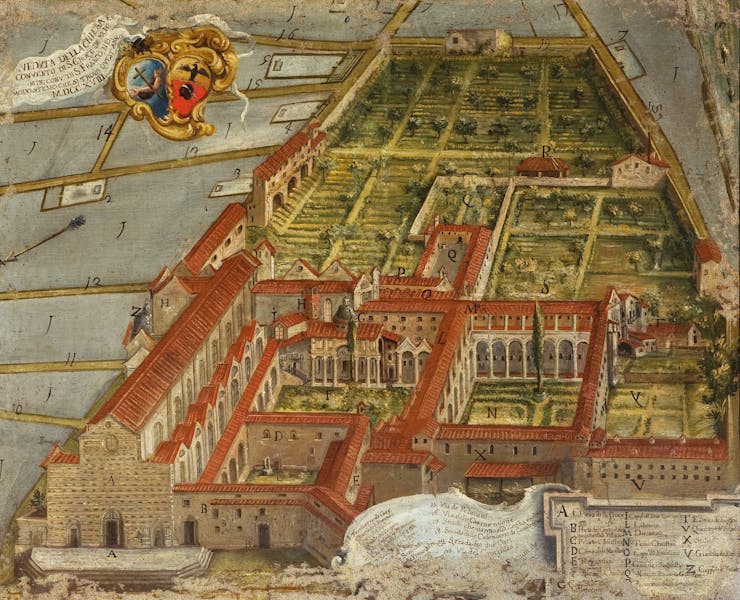
Florentine painter, Bird's Eye View of the Santa Croce Complex, 1718. Museo dell’Opera di Santa Croce
On Buonsignori's map and in a view dated 1718 it is split into two parts by a building standing perpendicular to the church and attached to the last bay of the refectory. In the course of the 19th century the walls beneath the loggia were endowed with new funerary monuments and in 1843 they also received the statue of God the Father carved by Baccio Bandinelli for the choir of the cathedral in 1556.
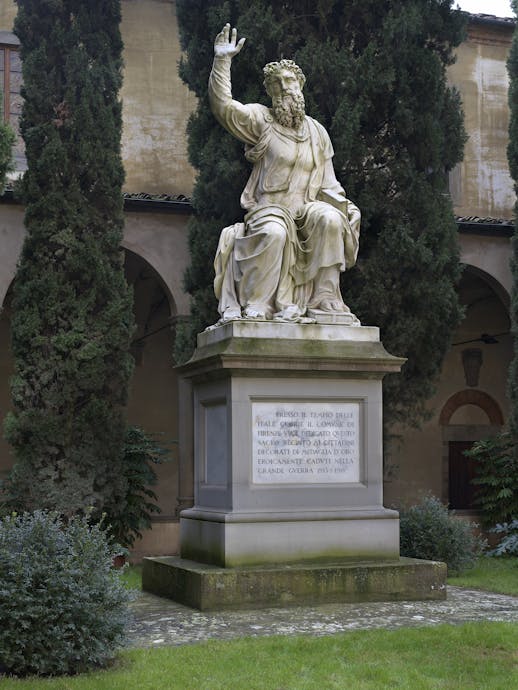
Baccio Bandinelli, God the Father, 1556. First cloister
When the façade of Santa Croce was being built (1857–65), the area became something of a builder's yard, and the central building was demolished in 1868–9. The building facing onto the square, the former home of the Inquisition, was also torn down in 1870 and rebuilt to a design by the architect Emilio De Fabris in the shape of a loggia, echoing the 14th century raised portico that runs along the side of the church.
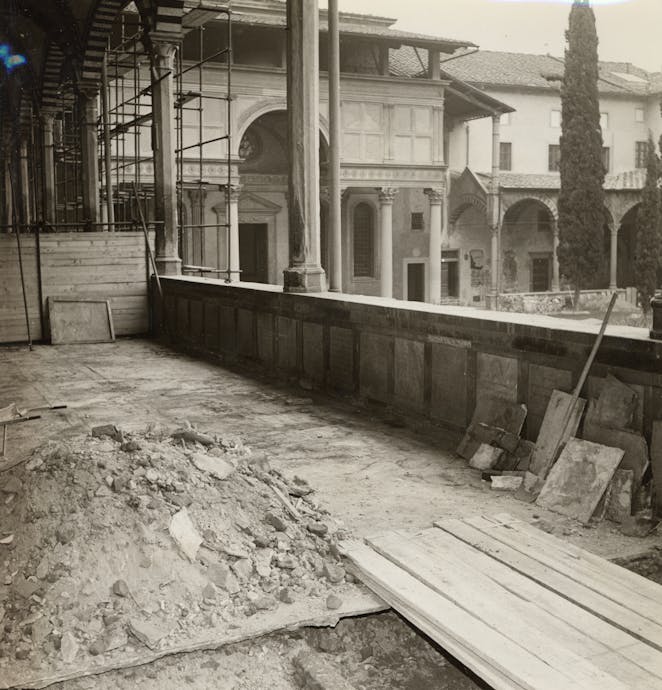
Rimozione dei monumenti e delle lapidi sepolcrali dai chiostri (loggiato Sud della basilica di Santa Croce)
In the early 1960s the 19th century monuments and funerary inscriptions were removed to the basement area beneath the loggia, although some were spared, for example the funerary monument to the memory of Florence Nightingale carved by Francis William Sargant in 1913.
Henry Moore's Warrior with Shield (1972) was placed on the lawn in 1987. After a period of maintanance, the artwork is currently located in Palazzo Vecchio, in the Terrazza di Saturno, where the sculptor aways wanted it.
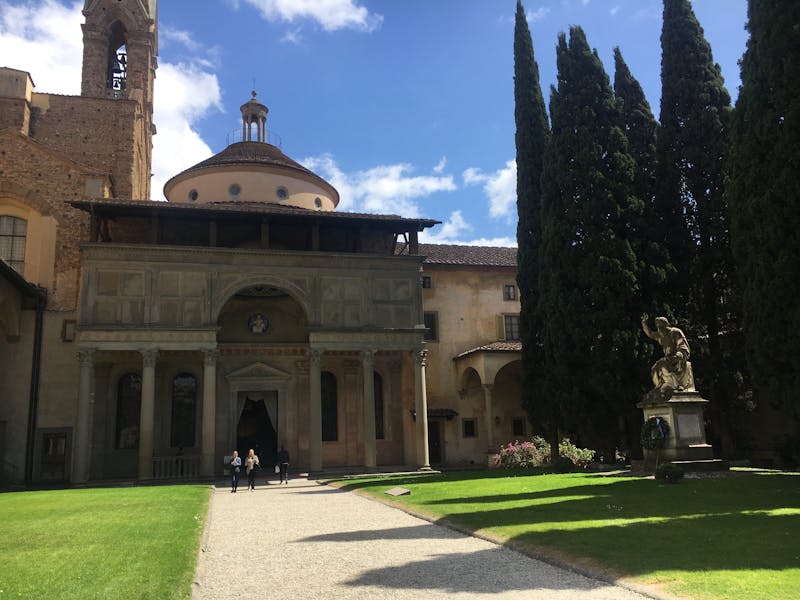
First cloister
The portal separating the two cloisters, generally attributed to Benedetto da Maiano, has also been given to Bartolomeo, Geri, Francesco and Desiderio da Settignano. The cloister, known as "the Brunelleschi cloister" even though it was erected many years after his death, was probably built to a design by Bernardo Rossellino for an extremely wealthy and generous benefactor named Tommaso Spinelli. The lower portico on pietra serena stone columns is surmounted by the rounded arches of the upper loggia, currently used by the Biblioteca Nazionale Centrale.
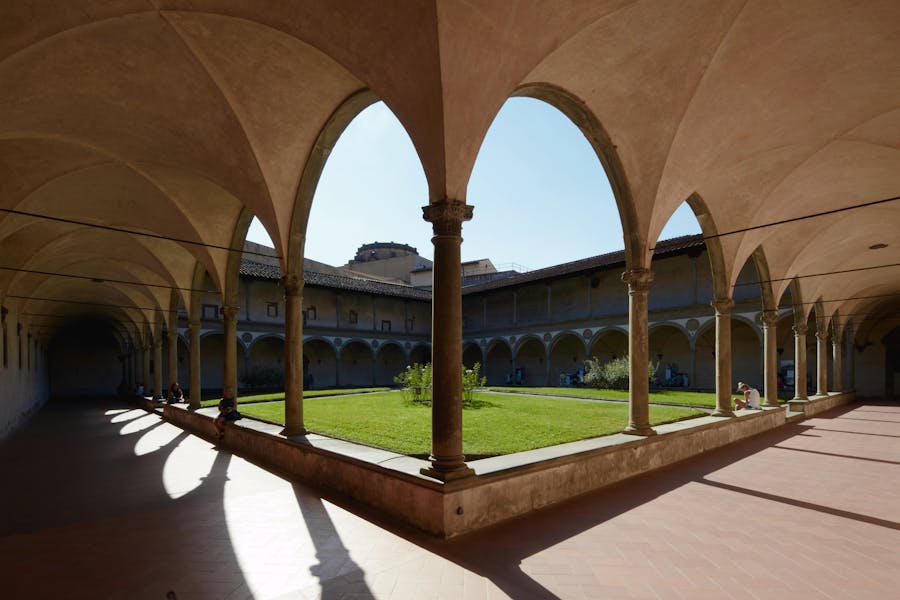
Second cloister